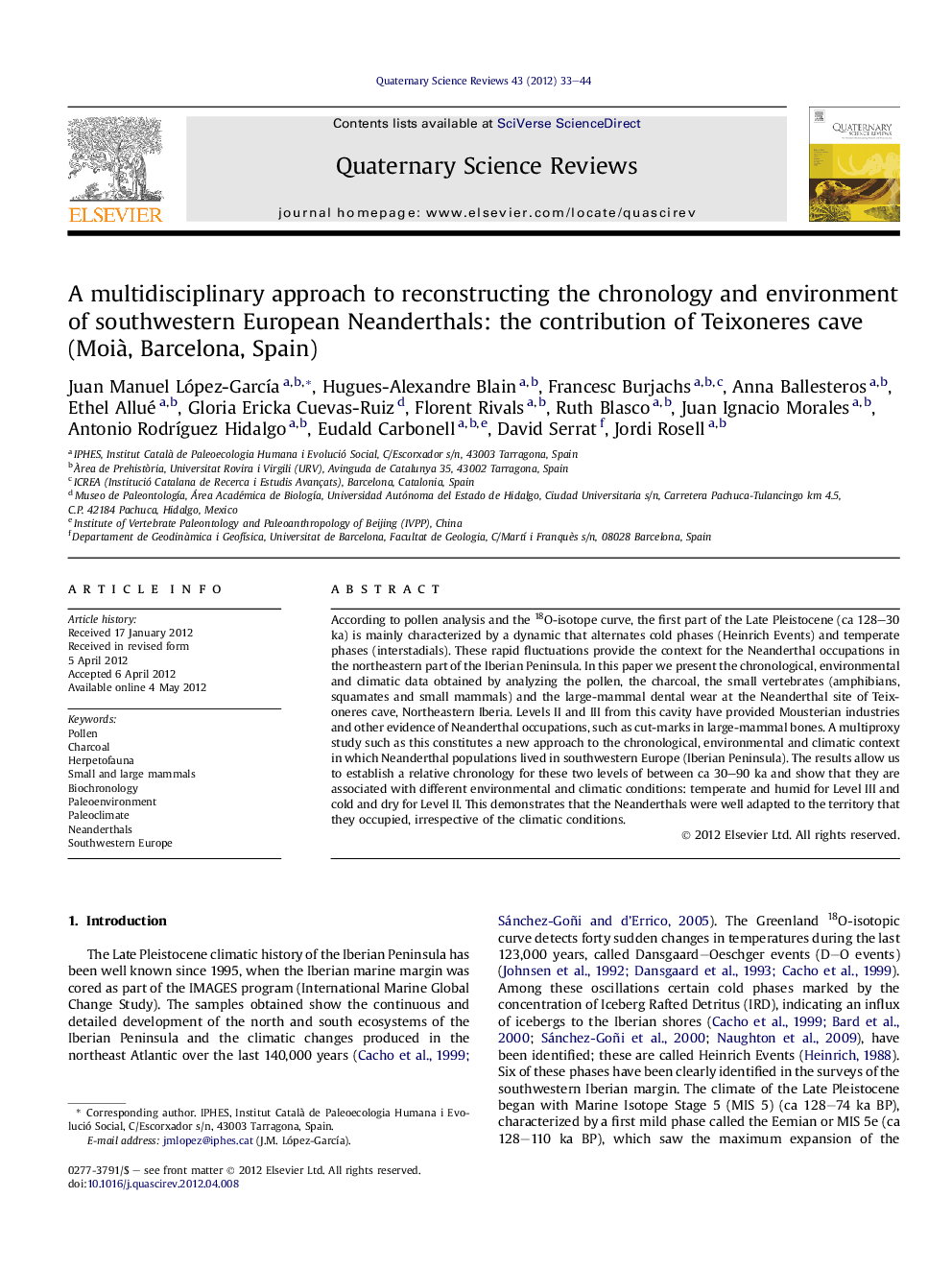| Article ID | Journal | Published Year | Pages | File Type |
|---|---|---|---|---|
| 4735474 | Quaternary Science Reviews | 2012 | 12 Pages |
According to pollen analysis and the 18O-isotope curve, the first part of the Late Pleistocene (ca 128–30 ka) is mainly characterized by a dynamic that alternates cold phases (Heinrich Events) and temperate phases (interstadials). These rapid fluctuations provide the context for the Neanderthal occupations in the northeastern part of the Iberian Peninsula. In this paper we present the chronological, environmental and climatic data obtained by analyzing the pollen, the charcoal, the small vertebrates (amphibians, squamates and small mammals) and the large-mammal dental wear at the Neanderthal site of Teixoneres cave, Northeastern Iberia. Levels II and III from this cavity have provided Mousterian industries and other evidence of Neanderthal occupations, such as cut-marks in large-mammal bones. A multiproxy study such as this constitutes a new approach to the chronological, environmental and climatic context in which Neanderthal populations lived in southwestern Europe (Iberian Peninsula). The results allow us to establish a relative chronology for these two levels of between ca 30–90 ka and show that they are associated with different environmental and climatic conditions: temperate and humid for Level III and cold and dry for Level II. This demonstrates that the Neanderthals were well adapted to the territory that they occupied, irrespective of the climatic conditions.
► Botanical and mammalian data to reconstruct the Neanderthals environment and climate. ► Small mammals to approximate the chronology of Southwestern European Neanderthals. ► Neanderthals were well adapted to the territory regardless of weather conditions. ► Southwestern European Neanderthals were closely associated with woodland formations.
